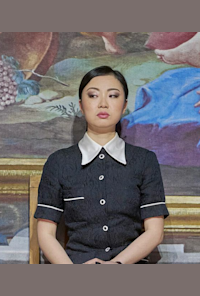It was certainly a risk that Wolfgang Amadeus Mozart and Lorenzo Da Ponte took when they first worked together, but in any case it was a completely unusual approach in Vienna in the late 18th century: starting a new opera project without having been commissioned beforehand , with no guaranteed prospect of a performance or even payment. In the case of Mozart, the situation was made more difficult by the fact that although he had an excellent reputation as an instrumental composer in the relevant places - not least at the imperial court - he was considered to have little experience in the field of the theatre. On top of that, the subject chosen by the composer, Beaumarchais' comedy Le Mariage de Figaro, a realization of the planned opera on a public stage was also in question — after all, Joseph II had shortly before forbidden the performance of the play, which was charged with revolutionary explosive material, on the grounds that “the play contained a lot of objectionable things”. With a lot of diplomatic skill and pointing out that he had not created a pure translation of the French original, but a new version of the material that had been cleaned of all questionable content, Da Ponte managed to allay the emperor's concerns, even to convince him of the project and finally to do so to personally order the premiere of Le nozze di Figaro on May 1, 1786 in the Hofburgtheater.
In fact, it was less the current politics or even revolutionary ideas for the reorganization of society that drove the composer and the lyricist, but rather fundamental questions of human interaction. The humiliated Countess' efforts to win back the love of her unfaithful husband, Susanna and Figaro's efforts to defend their relationship against the Count's amorous pursuits, the sexual awakening of the pubescent Cherubino form the central storylines, the intersection of which gives rise to the confusion and situations which Mozart the opportunity to delve deep into the inner life of the characters and to examine gender relations. Last but not least, Mozart succeeded in doing this by upgrading the music to a complete dramatic function carrier: Every word, every sentence, every emotion found its concrete compositional form in the musical text. Contrary to the common cliché, however, Mozart did not write down the individual numbers in one go, but experimented and struggled again and again to find the ideal implementation for him, erased approaches that had already been found and looked for new solutions, as can be seen from the autograph . In the overture, for example, Mozart discarded an originally intended slow, 16-bar D minor section in favor of the continuous atmospheric anticipation of the "mad day," as the subtitle of the play, which is also retained in the opera, is. And with the one already used by Gluck, With the fandango in the third act, which goes back to an Andalusian folk melody, even the Spanish ambience of the plot is made audible. The final completion of the score, including the orchestration, took half a year, which, given Mozart's usual working tempo and the production conditions of the opera house at the time, must be described as completely exceptional.
But Mozart and Da Ponte also deviated from the tradition of opera buffa on a purely formal level, valuing ensembles at the expense of arias and achieving a balance between the two forms. Interesting detail in this context: although the opera is called The Marriage of Figaro , the focus of the action is ultimately less on the title character than on his bride Susanna, which is also reflected in her strong musical presence. For example, she is the only one who takes part in all the duets.
The initial great triumph of Le nozze di Figaro (the audience demanded so many repetitions of individual numbers that the Emperor had to intervene to regulate them) soon ebbed away in Vienna for the time being, but the subsequent successful performances in Prague at least attracted the composition commission for Don Giovanni after himself. The work achieved its final status as one of the most popular operas on international repertoires at the beginning of the 20th century, not least thanks to Gustav Mahler's tireless efforts in Europe, but also in New York. At the Vienna State Opera, Le nozze di Figaro is by far the most frequently performed piece in the entire repertoire.
The forthcoming new production continues the Mozart-Da Ponte cycle begun last year under the direction of music director Philippe Jordan and staged by Barrie Kosky.












